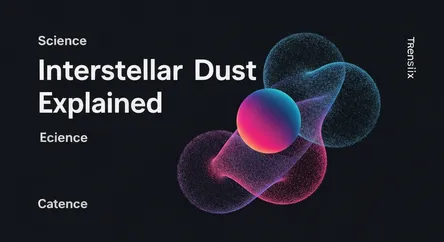Science
Interstellar Dust Explained

Discover interstellar dust, the tiny cosmic particles that form stars and planets. Learn why this stardust is crucial for the universe's evolution.
What is it?
Interstellar dust consists of tiny solid particles, typically smaller than a grain of sand, that drift through the vast space between stars. Composed mainly of silicates, carbon, and ice, this dust is a key component of the Interstellar Medium (ISM), which also includes gas. It originates from the atmospheres of dying stars like red giants and from the explosive remnants of supernovae. While it may seem insignificant, this cosmic dust plays a monumental role in the universe, obscuring starlight and acting as the primary building block for celestial bodies.
Why is it trending?
Interest in interstellar dust is surging thanks to advanced observatories like the James Webb Space Telescope (JWST). Its powerful infrared instruments can peer through the dense dust clouds that hide stellar nurseries, revealing the processes of star and planet formation in unprecedented detail. Recent findings are providing new insights into the chemical composition of these dust grains and how they clump together to form protoplanetary disks, the birthplaces of planets. This makes it a frontier topic in astrophysics.
How does it affect people?
Interstellar dust is fundamental to our existence. The very planet we live on, and the elements that make up our bodies, were once part of this cosmic dust. These particles are the raw materials from which our solar system was born roughly 4.6 billion years ago. By studying interstellar dust, scientists can trace the lifecycle of matter in the universe and better understand our own cosmic origins. In essence, learning about this stardust is learning about the story of ourselves.